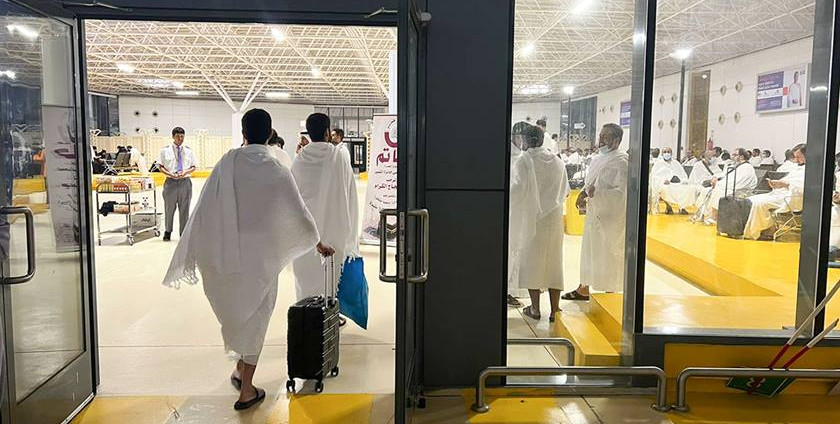Hajj is a crucial time of the year for Muslims, performed between the 8th – 12th Dhul Hijjah.
Muslim pilgrims from Qatar arrived to Saudi Arabia on Monday morning to take part in the annual Hajj, the largest pilgrimage of its kind since the coronavirus pandemic brought much of the world to a standstill.
For those heading off from Qatar, pilgrims are divided into nine groups, the first of which began arriving to the King Abdulaziz International Airport in Jeddah on Saturday afternoon.
More than 5,000 Qatari nationals applied for this year’s Hajj season, the Ministry of Endowments and Islamic Affairs public procurement division (AWQAF) said last month.
This year’s Hajj season is the first and biggest since restrictions were imposed in 2020 to contain the Covid-19 virus. In 2020, Saudi Arabia imposed strict rules allowing just 1,000 locals from within the kingdom to attend the annual pilgrimage.
This year, authorities set a limit of just 1 million pilgrims – almost half the usual annual number.
It is also the second following the lifting of the illegal air, land and sea embargo imposed on Qatar by Saudi Arabia, the UAE, Bahrain, and Egypt in 2017.
The quartet had severed their ties with Qatar before restoring them on 5 January last year with the signing of the Al-Ula Declaration.
Qatari authorities have been preparing for the arrival of the pilgrims ahead of the start of the Hajj season, providing guidance and awareness services as well as health advice to worshippers.
The Qatari Hajj mission also introduced pilgrims to its unified call and support centre, designed to assist them during their pilgrimage.
The Gulf state also introduced an innovative HT Rescue Jacket, the first of its kind, that will be used to provide better medical care during their journey at the holy site.
The Head of the Medical Unit of the Qatari Hajj Mission Khalid Abdul Hadi said the jacket was developed in cooperation with the Medical Committee of the Qatar Red Crescent Society (QRCS).
The jacket, worn by paramedics, is equipped with devices and medical kits that are found in a single ambulance. The vests would help attend to emergency situations, especially in crowded areas, such as Muzdalifah where it is difficult for ambulances to reach patients.
Some of the developed equipment included in the vests include blood pressure monitors, a glucose meter, an asthma nebulizer, and temperature measurement device. In addition to the mobile ambulances, the Hajj mission established a medical clinic in place for both men and women patients.
What is Hajj?
Hajj marks a crucial time of the year for Muslims and is performed between the 8th – 12th Dhul Hijjah, the last month of the Islamic lunar calendar.
During the holy season, Muslims from around the world flock to Mecca, Saudi Arabia, in what is often described as a “once in a lifetime” experience to take part in the annual pilgrimage.
The Hajj pilgrimage is one of the main five pillars of Islam and is an obligation on Muslims if they are physically and financially able to attend.
To mark the end of the pilgrimage, Muslims around the world celebrate Eid Al Adha – in which a sheep is sacrificed and its meat is distribute the meat to those in need.







